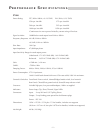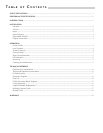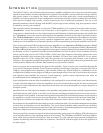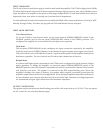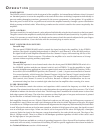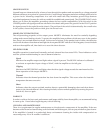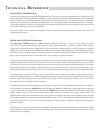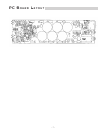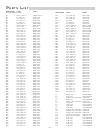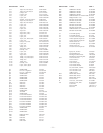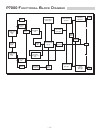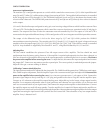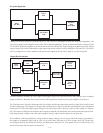
T ECHNICAL REFERENCE
– 6 –
FIELD SERVICE CONSIDERATIONS
A primary focus during the design and development of the P7000 was to ensure the dependability of the amplifiers. The
use of lateral MOSFET output transistors and the low voltage trans•nova input stage combined with careful component
selection for the circuit assembly made the reliability goals achievable. However, a parallel effort was also undertaken
to make sure any down time caused by an amplifier fault was minimized by making the amplifier technician “friendly.”
The modular construction allows exchanging the entire operational portion of either channel quickly and easily without
the need for soldering or specialized equipment.
This section of the manual contains descriptions of circuit operation and block diagrams to assist technicians with
component level repairs.
THEORY AND OPERATION OF trans•
nova
The trans•
nova
(TRANSconductance NOdal Voltage Amplifier) principle is based on our 1984 U.S. Patent
4,467,288. This patent describes the advantages of audio power amplifiers in which a MOSFET output stage is
connected in a grounded source configuration. In this connection the output stage has its full voltage gain of typically
20dB (ten times), instead of the usual 1dB loss of voltage follower designs. The output stage is further refined into a trans-
impedance stage (current-to-voltage converter), to achieve extremely short loop (fast) negative feedback. The output
stage is driven cooperatively by a transconductance stage (voltage-to-current converter).
Using the output stage to supply voltage gain inherently increases the power gain (for the same bandwidth) of the output
stage by typically ten times over the conventional follower connection, using the same MOSFET devices. This increase
in efficiency allows the use of a much simpler input section than in the more common high voltage designs. The number
of serial stages, from input to output can be reduced from five or more to only three. This also allows the input section
to be designed with the criteria of high quality Class A line amp with the characteristic high linearity and wide bandwidth.
The disadvantage of the Class A driver stage is the limited current headroom available. A conventional Class A
transconductance stage has a 2:1 or 6dB limit on peak-to-quiescent current. The number of MOSFETs used in the P7000
imposes a significant capacitive load on the driver stage, enough of a load to strain the ability of the driver to deliver
the required current at the high audio frequencies.
Since the operation of the transconductance driver stage is a major factor in the reproduction quality of the amplifier,
we developed our proprietary DIABLO (Dynamically Invariant A-B Linear Operation, patent application in process)
circuit to satisfy the current headroom requirements. DIABLO does this by smoothly and continuously varying the
current transfer ratios of the two transconductance paths, under the control of the signal current itself. This
implementation allows the current transfer ratio of one path to be smoothly and continuously reduced to zero while the
other path is smoothly and continuously increased by a factor of two. This yields an additional 14dB of current headroom
to drive the MOSFETs. The result is a dramatic reduction in high frequency distortion, combined with improved
ultrasonic stability.
The P7000 has the highest power rating of any amplifier utilizing the basic trans•
nova
principle. Designers of systems
with high power requirements can now take advantage of the natural and realistic reproduction characteristic of the
trans•
nova
circuit topology.




